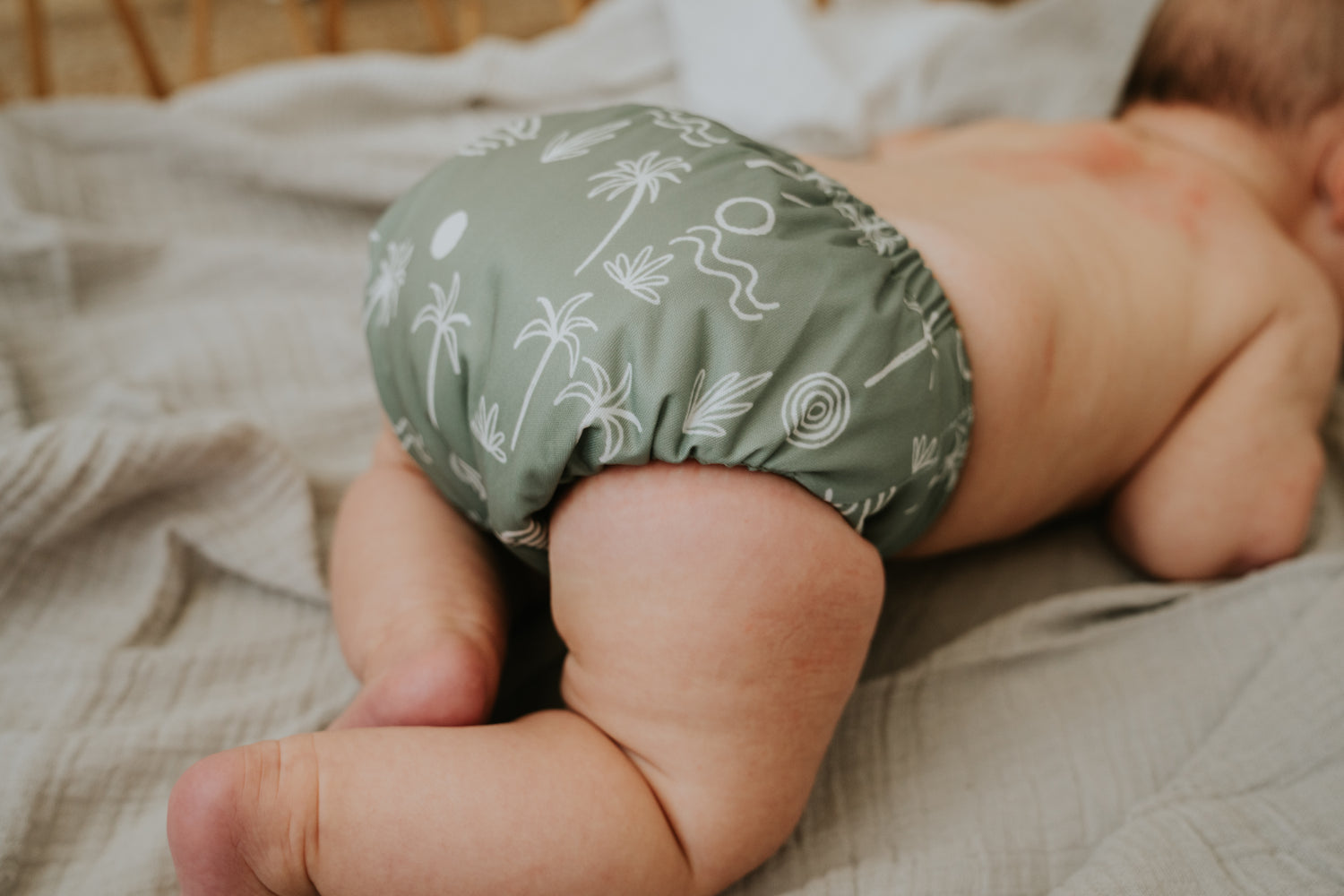If you haven't had the chance to touch and feel these fabrics and types of inserts it can initially be quite confusing as to what is the most absorbent and what is going to be suitable for your child.
Inserts vs Booster vs Liners... what's the difference?
Inserts - The main absorbency of the nappy - the main 'insert' that is placed in the nappy to collect liquid.
Booster - A 'booster' insert that is added on top of the existing insert to boost absorbency for heavy wetters or sleep time.
Liners - Liners are added to a nappy for a number of reasons, either to absorb moisture quickly and provide a stay due layer, or to collect number twos and make the clean easier. These are available as disposable or reusable options.
Now about fabrics....
Microfibre
Microfibre is a man-made material that is super fast at absorbing liquids, however, has a low capacity. These are cheap to produce and dry quickly, they are often an insert option offered with the more cost-effective nappies. Here is a view pros and cons:
Pros:
- Cost effective insert
- Fast absorber
- Perfect for layering or boosting with slow absorbers to quickly draw in moisture.
Cons:
- Cannot be placed directly against baby's skin. It will draw moisture out of the skin causing rashes.
- Microfibre is prone to compression leaks, meaning that any pressure applied to the area can cause liquid to leak out the side of the nappy.
- Is not very absorbent, will be fine for the first couple of months but may require extra boosting over time.
Pre-use care: Microfibre does not require any preparation, however it is suggested any inserts are wash prior to use.
How to use: As microfibre cannot directly touch skin it will need to be placed inside a pocket so this material can do its job, with the layer of the nappy between baby's bottom and the insert they are completely safe to use.
Cotton
Cotton is the original natural fibre of traditional cloth nappies which is cheap and can hold up to 27 times it's body weight in liquid. It is nice and soft and often combined with other natural materials due to it's great qualities, here are a couple of pros and cons of cotton:
Pros:
- Great natural absorbency
- Super soft yet durable
- Can handle high washing and drying temperatures
Cons:
- Slower to dry
- Takes time to build absorbency
- Typically will shrink between 5 to 10% after washing.
Bamboo
Bamboo is another natural material that is a great absorber, it can hold up to 60% more than cotton making it the perfect combination for cloth nappies.
Pros:
- Super absorbent, found in most cloth nappies.
- Will remain soft after washing multiple times.
- The bamboo plant is fast growing and requires minimal chemicals in the growing process, it is considered extremely sustainable.
Cons:
- Slower to dry and can often 'warp' after several washes. Warping does not affect the absorbency more than the cosmetic look of the material.
- Takes time to build absorbency
- Typically will shrink between 5 to 10% after washing.
Note: You will often see other terms such as 'bamboo fleece', 'bamboo terry' and 'bamboo jersey' this is simply just the finish of the material.
Hemp
Hemp is the motherlode of natural absorbency which can hold up to 2.5 times what microfibre can hold. It is super durable and has natural antibacterial properties making it a great material for cloth nappies. This would personally be my favourite material to use as inserts, however there are a couple of things to weigh up...
Pros:
- SUPER absorbent
- Durable and naturally trim compared to bamboo
- Naturally antibacterial.
Cons:
- Slow at absorbing liquid, often needs to be paired with faster absorbers to draw in liquid quickly.
- Can often warp after several washes, this only affects the cosmetic look of the inserts not the functionality.
- Will require several washes to reach maximum absorbency. Hemp is coated in natural oils which will take several hot washes to remove, inserts can still be used however they may require more frequent changes in the first couple of uses.






